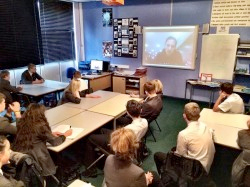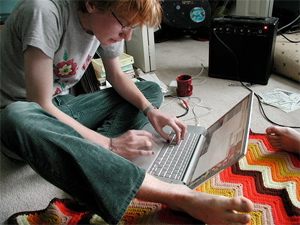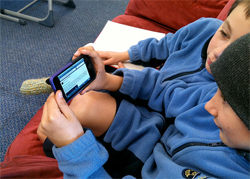First of all, for those unfamiliar with ‘flipped learning’, my presentation will help explain. Flipping is not new, as back in the 80s, before the days of the World Wide Web, I would give my students handouts to study in preparation for the next lesson (hence the term ‘prep’, as opposed to ‘homework’). This then freed up the lesson for learning where the content of the handouts could be discussed, questions on the handouts answered and practical work done to reinforce the handouts.

This practical guide is for teachers looking to adopt a flipped learning approach to their classroom.
If you’re still not sure what a flipped classroom looks like, or if you want to confirm what you think you know, take a few minutes to read my guest post for the Senior Leaders site: ‘The Future of Learning’.
To create my own flipped learning videos, I use the brilliant Explain Everything app for iPad. For £1.99 you really can’t go wrong with this app. The following guide shows how I create my videos using this app.

To flip or not to flip, that is the question. The concept of the "flipped classroom" - where "homework" is done in class and class work is done at home - has been around for a few years and, thanks to advances in video technology and gradually shifting attitudes towards independent learning and technology, is now emerging as a viable alternative to the status quo.
The flipped classroom is particularly exciting because it require students to take preparation more seriously and become increasingly active in class; it also requires teaching staff to shift their attitudes so that class time is a place for conversation rather than lecture. And above all, it leverages new technologies (particularly video) in order to facilitate preparation in an engaging way that truly changes students' attitudes and motivation towards preparing for classes.

What if traditional methods of classroom teaching and ‘homework’ were switched?
Teaching professionals have constantly looked at improving ways of raising learner engagement and attainment. While some have fared better than others, it is technology that has offered the greatest scope for innovation, helping the teacher to spend more time supporting students directly rather than instructing them from the front of the class.
Flipped or reversed teaching is not a new concept; it dates back to the early nineties where it was trialled in a study on Peer Instruction at Harvard University. The basis of Professor Eric Mazur’s study was to integrate computer software into the classroom in order to allow the teacher to act as a coach rather than a lecturer.

When students have access to their own Internet-connected devices at any time, both at home and at school, maths instruction has the potential to be revolutionised. Here are three great innovations available to maths instructors in 1:1 classrooms:
1:1 technology allows for extreme differentiation, even individualisation, of both the type of content each student is working on and the tasks each student is asked to complete. Instead of all working on the same topic at the same time, students in 1:1 classrooms can watch teacher-created videos (or videos from an external source) on whatever mathematical topics they need to learn next. Once that’s complete, the student can work on differentiated maths problems that match up with the topic taught in the video. As a result of 1:1 technology, each student can now be permitted to learn at his or her individualised pace, moving from topic to topic as quickly or slowly as needed. This shift to mastery-based learning, rather than calendar-based learning, can completely revolutionise a maths classroom all by itself.

Ah the ‘Flipped’ Class. Yet another educational concept based on previous practice and rebranded to suit modern vernacular?
‘Can you get the lesson recorded a bit earlier sir so we can see it?’ (student A)
‘Not sure about that but it seems you are happier about this way of learning now’ (teacher)
‘It’s alright’ (student A)
I think that’s progress and certainly a step ahead of where we were. I am a ‘flipped’ class convert, even if the term doesn’t quite fit, and I believe it has real merit as the pedagogy develops.

A community-driven platform for showcasing the latest innovations and voices in schools
Pioneer House
North Road
Ellesmere Port
CH65 1AD
United Kingdom